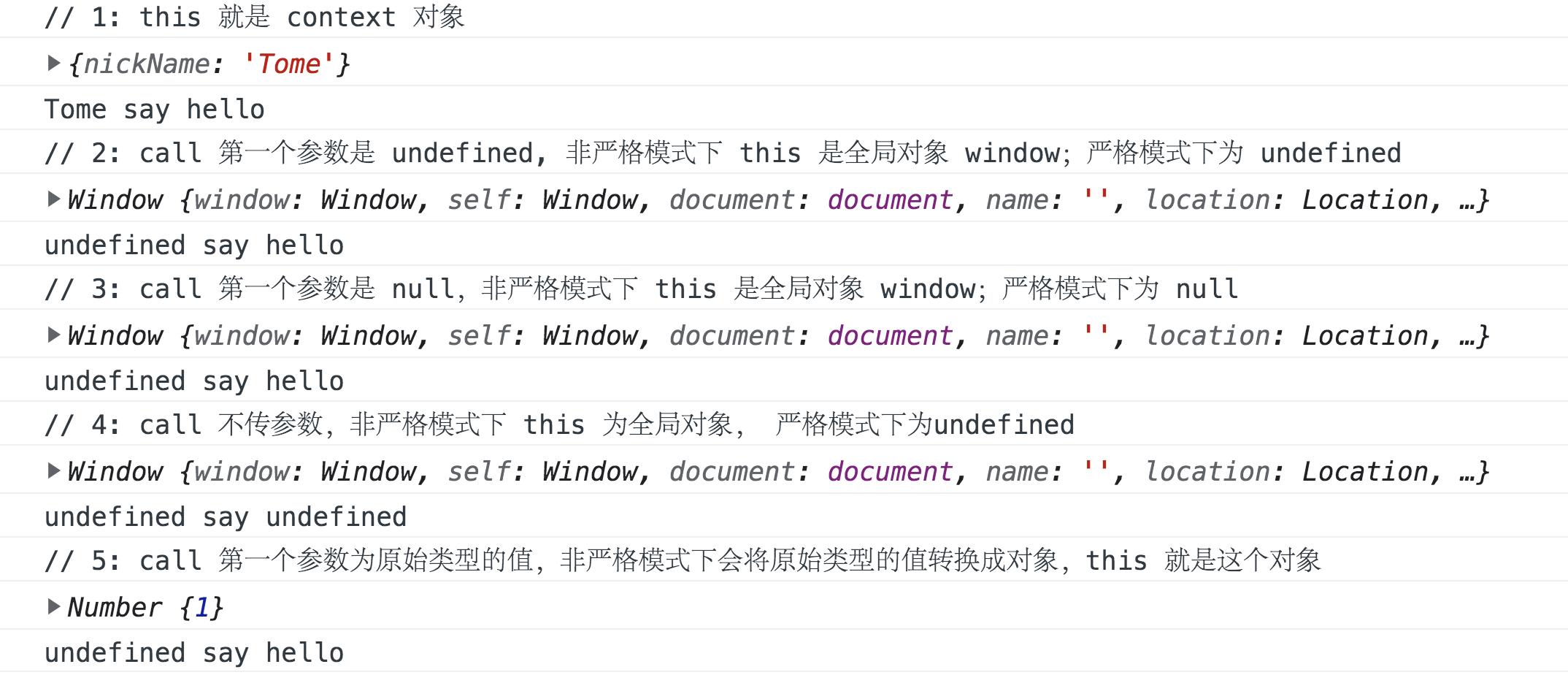# 前端手写题
# 实现防抖函数(debounce)
概念:在事件被触发n秒后再执行回调,如果在这n秒内又被触发,则重新计时。
适用场景: 搜索框搜索联想、优化resize事件等。
实现:
<!-- 防抖函数实现 -->
<!DOCTYPE html>
<html>
<head>
<meta charset="utf-8" />
<meta http-equiv="X-UA-Compatible" content="IE=edge" />
<title>Debounce</title>
<meta name="viewport" content="width=device-width, initial-scale=1" />
<style>
#search {
width: 400px;
margin-left: 300px;
margin-bottom: 50px;
}
#showSearch {
width: 800px;
height: 100px;
background: lightblue;
color: red;
margin-left: 300px;
}
</style>
</head>
<body>
<input type="search" id="search" />
<div id="showSearch"></div>
<script>
function debounce(fn, wait) {
let timer
return function () {
const args = arguments
const context = this // 保留函数执行时的this对象
if (timer) {
clearTimeout(timer)
}
timer = setTimeout(function () {
fn.apply(context, args)
}, wait)
// 因为这里是在setTimeout的回调函数中执行,fn中的this在非严格模式下是指向window的,所以需要改变fn中this的指向,
// 同时将接受到的参数传递给fn
}
}
const showSearch = document.querySelector('#showSearch')
const search = document.querySelector('#search')
function getSearchInfo(e) {
showSearch.innerText = this.value // 这里的this指向
}
search.onkeyup = debounce(getSearchInfo, 1000)
</script>
</body>
</html>
# 实现节流函数(throttle)
概念:每隔n秒执行一次事件,在这n秒内无论触发多少次事件最终只会执行一次
适用场景:优化用户点击过快等
实现:
<!-- 防抖函数实现 -->
<!DOCTYPE html>
<html>
<head>
<meta charset="utf-8" />
<meta http-equiv="X-UA-Compatible" content="IE=edge" />
<title>Throttle</title>
<meta name="viewport" content="width=device-width, initial-scale=1" />
</head>
<body>
<script>
// 实现方式1:
// 这种方式会延迟到delay时间才会执行一次
function throttle1(fn, delay) {
let timer
return function () {
const context = this
const args = arguments
if (timer) {
return
}
timer = setTimeout(function () {
fn.apply(context, args)
timer = null // 注意这里需要将timer置为null
}, delay)
}
}
// 实现方式2:
// 这种方式会立刻触发一次,然后等delay时长后再触发
function throttle2(fn, delay) {
let previous = 0
return function () {
const now = Date.now()
const args = arguments
if (now - previous > delay) {
fn.apply(this, args)
previous = now
}
}
}
function testThrottle(e, content) {
console.log(e, content)
}
const testThrottleFn = throttle2(testThrottle, 1000) // 节流函数
document.onmousemove = function (e) {
testThrottleFn(e, 'throttle') // 给节流函数传参
}
</script>
</body>
</html>
# 用 Throttle 来优化 Debounce
# 深拷贝(deepclone)
# 实现Event(event bus)
# 实现instanceOf
# 模拟new
要模拟实现new关键字,首先我们要知道new关键字做了哪些事情。
new关键字后面跟的是构造函数或者class。参考 MDN 中对new (opens new window)关键字的介绍,可以总结几个关键点:
- 创建一个空对象;
- 给空对象添加__proto__属性,指向构造函数的prototype(原型)对象;
- 将新创建的对象作为 this 上下文;
- 如果构造函数返回一个对象,这个对象就是new操作的结果;如果构造函数返回的是原始类型或者不返回值则new操作的结果就是上面创建的对象。
根据上面的要点可以实现如下:
function ObjFactory() {
const obj = new Object() // 1. 创建一个空对象;
const args = arguments
const Constructor = Array.prototype.shift.call(args) // ObjFactory的第一个参数是构造函数,这里shift会改变args,剩下的都是传给构造函数的参数
obj.__proto__ = Constructor.prototype // 2. 给空对象添加__proto__属性,指向构造函数的prototype(原型)对象;
const res = Constructor.apply(obj, args) // 3. 将新创建的对象作为 this 上下文;
return Object.prototype.toString.call(res) === '[object Array]' ||
Object.prototype.toString.call(res) === '[object Object]' ||
Object.prototype.toString.call(res) === '[object Function]'
? res
: obj // 4. 如果构造函数返回一个对象,这个对象就是new操作的结果;如果构造函数返回的是原始类型或者不返回值则new操作的结果就是上面创建的对象。
}
const Person = function (name) {
this.name = name
}
Person.prototype.sayHello = function () {
console.log(`${this.name} say hello`)
}
const res = ObjFactory(Person, 'Tom')
res.sayHello()
# 实现一个call
实现 call 之前,还是先来看看 call 方法能做什么,首先要明确 call 是 Function.prototype 里面的方法,也就是说每个函数或者方法中都可以调用 call 方法,根据 MDN 中对 call (opens new window) 的介绍可以总结出以下几个要点:
- call 方法的第一个参数用作调用 call 的函数中的this,后续传入的参数作为调用函数的参数。
- 执行函数,函数的执行是在第一步的this和传参下进行。
- 非严格模式下,如果 call 的第一个参数为 undefined、null 或者不传参数,this 指向全局对象;如果传入的是原始类型的值,this 是将原始类型转换为对象后的值。
<!DOCTYPE html>
<html lang="en">
<head>
<meta charset="UTF-8" />
<meta http-equiv="X-UA-Compatible" content="IE=edge" />
<meta name="viewport" content="width=device-width, initial-scale=1.0" />
<title>call</title>
</head>
<body>
<script>
const context = {
nickName: 'Tome'
}
function say(word) {
console.log(this)
console.log(`${this.nickName} say ${word}`)
}
console.log('// 1: this 就是 context 对象 ')
say.call(context, 'hello')
console.log('// 2: call 第一个参数是 undefined, 非严格模式下 this 是全局对象 window;严格模式下为 undefined')
say.call(undefined, 'hello')
console.log('// 3: call 第一个参数是 null,非严格模式下 this 是全局对象 window;严格模式下为 null')
say.call(null, 'hello')
console.log('// 4: call 不传参数,非严格模式下 this 为全局对象, 严格模式下为 undefined')
say.call()
console.log('// 5: call 第一个参数为原始类型的值,非严格模式下会将原始类型的值转换成对象,this 就是这个对象')
say.call(1, 'hello')
</script>
</body>
</html>
打印结果如下:

根据这些要点可以模拟实现call方法:
<!DOCTYPE html>
<html lang="en">
<head>
<meta charset="UTF-8" />
<meta http-equiv="X-UA-Compatible" content="IE=edge" />
<meta name="viewport" content="width=device-width, initial-scale=1.0" />
<title>myCall</title>
</head>
<body>
<script>
// 这里不传入 context 或者传入的是 null 或者 undefined,将 context 指向 window
// 这里没有考虑传入基本类型的情况。
Function.prototype.myCall = function (context, ...args) {
context = context || window
context.fn = this // this 指向调用函数,因为 js 里面函数的构造函数都是 Function,所以函数是Function构造函数的实例,所以this拿到的就是函数。
const result = context.fn(...args) // 调用方法,这样 fn 里面的 this 就是 context;将myCall接收到的参数args传入到fn里面。
delete context.fn // context上是没有fn的,fn只是临时使用一下,调用完后需要将其删除
return result // 将执行结果返回
}
var nickName = 'Tony'
const context = {
nickName: 'Tome'
}
function say(word) {
console.log(`${this.nickName} say ${word}`)
}
say.myCall(null, 'hello')
</script>
</body>
</html>
# 实现一个apply
趁热打铁,实现了call方法,那apply的实现就再简单不过了。
call和apply的作用都是一样的,第一个参数都是this值,不同的是call后面的参数是一个一个传入的,apply则是接收的一个类数组对象 (opens new window)
<!DOCTYPE html>
<html lang="en">
<head>
<meta charset="UTF-8" />
<meta http-equiv="X-UA-Compatible" content="IE=edge" />
<meta name="viewport" content="width=device-width, initial-scale=1.0" />
<title>myApply</title>
</head>
<body>
<script>
// 这里不传入 context 或者传入的是 null 或者 undefined,将 context 指向 window
Function.prototype.myApply = function (context, args) {
context = context || window
context.fn = this // this 指向调用函数,因为 js 里面函数的构造函数都是 Function
let result
// 如果args为undefined或者null说明不需要传参数
if (args === undefined || args === null) {
result = context.fn()
} else {
// 注意:这里为了演示只是简单地判断了args是否为数组,实际call函数是可以接收类数组参数的。
if (!(args instanceof Array)) {
throw TypeError('不接收非数组参数')
}
result = context.fn(...args)
}
delete context.fn
return result
}
var nickName = 'Tony'
const context = {
nickName: 'Tome'
}
function say(word) {
console.log(this)
console.log(`${this.nickName} say ${word}`)
}
say.myApply(null, undefined)
</script>
</body>
</html>